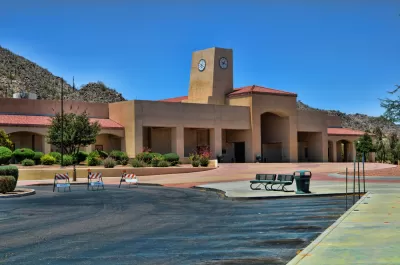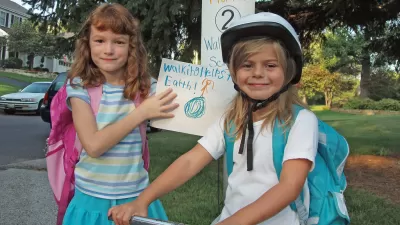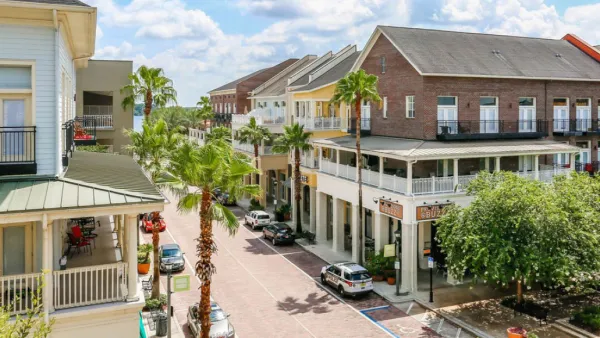St. Cloud, Minnesota is considering the question of whether to renovate or rebuild—and where to rebuild—a local high school.

Kristi Marohn reports on the implication of a proposal to move the location of Technical High School in the city of St. Cloud, Minnesota to a location on the edge of town 4.5 miles away from the current location. Among the costs of moving the school away from the city's core, according to the article: the loss of walkable access to the school.
Marohn presents the Technical High School case as an example of a trend found elsewhere in the country:
"As school districts nationwide seek to provide modern learning environments, many are building large schools outside of core urban areas, where land is cheaper and more plentiful. The spacious, modern schools offer many benefits, including attractive and functional designs, better accessibility for students with disabilities and on-site athletic fields."
"But they also come with hidden costs," adds Marohn. The article goes on to describe the case made by the U.S. Environmental Protection Agency as well as smart growth advocates, who argue that a more holistic cost benefit analysis should influence the decision of where to site the location of new schools. Writes Marohn: "Among the costs of building a new school farther from the center of St. Cloud: extending sewer and water utilities and improving roads that aren't designed for the traffic a school would bring."
FULL STORY: Moving Tech to the outskirts could have hidden costs

Planetizen Federal Action Tracker
A weekly monitor of how Trump’s orders and actions are impacting planners and planning in America.

Restaurant Patios Were a Pandemic Win — Why Were They so Hard to Keep?
Social distancing requirements and changes in travel patterns prompted cities to pilot new uses for street and sidewalk space. Then it got complicated.

Map: Where Senate Republicans Want to Sell Your Public Lands
For public land advocates, the Senate Republicans’ proposal to sell millions of acres of public land in the West is “the biggest fight of their careers.”

Orange County, Florida Adopts Largest US “Sprawl Repair” Code
The ‘Orange Code’ seeks to rectify decades of sprawl-inducing, car-oriented development.

Maui's Vacation Rental Debate Turns Ugly
Verbal attacks, misinformation campaigns and fistfights plague a high-stakes debate to convert thousands of vacation rentals into long-term housing.

San Francisco Suspends Traffic Calming Amidst Record Deaths
Citing “a challenging fiscal landscape,” the city will cease the program on the heels of 42 traffic deaths, including 24 pedestrians.
Urban Design for Planners 1: Software Tools
This six-course series explores essential urban design concepts using open source software and equips planners with the tools they need to participate fully in the urban design process.
Planning for Universal Design
Learn the tools for implementing Universal Design in planning regulations.
Heyer Gruel & Associates PA
JM Goldson LLC
Custer County Colorado
City of Camden Redevelopment Agency
City of Astoria
Transportation Research & Education Center (TREC) at Portland State University
Camden Redevelopment Agency
City of Claremont
Municipality of Princeton (NJ)





























